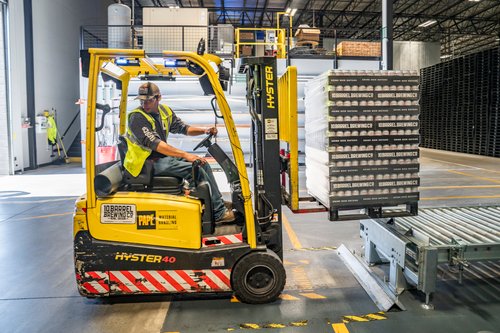In many respects, a warehouse is only as good as its workers, and finding quality labor can be challenging even under the best circumstances. Even if you manage to find, hire, and retain good employees, getting the best out of them can be a difficult task, especially if your warehouse serves customers with a diverse range of interests and orders.
No matter how skilled or hardworking your employees are, an inefficient working environment could significantly hinder their productivity and your warehouse’s profitability as a result. While there is no one-size-fits-all approach to effectively managing your staff, we can offer some warehousing labor best practices to help you make the most of your workforce.
The Importance of Training and Retraining
On-the-job training is essential for all warehousing operations. Anything that falls within an employee’s day-to-day job responsibilities should be something they understand how to do backwards and forwards. It’s important to realize, however, that job training is not a one-time concern, but rather something that should be evolving to account for nuances that arise during operations.
If you’re training new-hires to do things a certain way, make sure those methods are also taught to your existing employees. If new knowledge or techniques become available and industry standards change, ensure all your employees are up to date. Even an occasional run through the basics can help ensure safety procedures and best practices are fresh in every worker’s mind.
Additional training of warehouse labor is a perfect example of a small expense that saves a lot of money in the long run. While you may spend time and money having your workers go through training sessions instead of completing tasks on the floor, the benefits of increased productivity and a lower rate of accidents far outweigh those costs.
Employee Input Can Be Just as Useful as Data
While it’s impossible to measure everything your employees do in quantitative terms, their input about warehouse operations can be just as useful as empirical data.
Warehouse managers should maintain consistent channels of communication with their workers and solicit feedback in good faith about new processes and how old ones could be improved. No one knows your warehouse better than the people who work there, so you should use their knowledge to your mutual advantage.
Getting the Most out of Available Labor
With the demand for around-the-clock, online ordering at an all-time high, the risk of employee burnout is also greater than ever, regardless of how well you manage other aspects of your warehouse’s operations.
High turnover is costly in terms of both your company’s finances and the morale of your remaining employees, so it’s essential to provide enough work for your dependable full-timers and ensure that they know their hard work is appreciated. Performance bonuses, flexible shift schedules, and direct positive feedback from management can go a long way toward making a demanding shift schedule more balanced.
Depending on the situation, you may also want to consider supplementing your full-time workforce with flex labor to avoid overworking your existing employees. Whether you need to account for a sudden surge in demand, a seasonal rush, or an unexpected call-out, a platform like HapiGig could provide you with experienced, on-demand labor so you can efficiently meet any needs in your warehouse.

